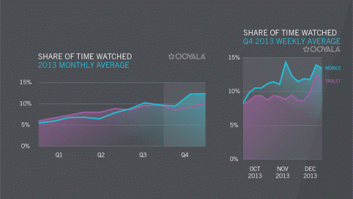
There are no prizes for the top level prediction for 2013, writes Workflow Files editor Dick Hobbs. Across the industry we will have to create more content, and deliver that content to more platforms. Consumers will expect to be able to access their preferred media on any device, and to be engaged by second screen apps and new forms of content. Below that lies a real challenge. How are we going to manage and archive all that content? How are we going to be able to deliver it to multiple platforms without having many levels of encoding and wrapping? And how are we going to handle file interchange? To think that, back in the good old days of the last century, we worried that a new video format came along every couple of years. Should we record on Beta or M2? Life was so simple when file exchange meant at most a couple of BNC and XLR cables. In the file-based era things have not gone so smoothly. MXF was supposed to solve the problem, but in attempting to cover all the bases it ended up as such a vague standard that two systems could be fully compliant yet still be incapable of talking to each other. One of the current initiatives is MPEG-Dash, the dynamic adaptive streaming over HTTP standard. Dynamic adaptive streaming means you should be able to create a single output from which receiving devices – computers, tablets and smartphones – can extract the resolution they want at the bitrate the connection can sustain. Adaptive bitrate streaming is already here: we know it as Dynamic Streaming (Adobe), HTTP Live Streaming (Apple) or Smooth Streaming (Microsoft). And those three names of industry giants are a clear indication why MPEG-Dash may have an uphill struggle: are Apple or Microsoft likely to reinvest and reconfigure their products and content delivery networks away from their proven implementations to a new standard developed by what they consider to be a minor part of the industry? The same could be said for archiving. Work is rapidly progressing on the AXF format for archive interchange (see Sweden implements digital film archive in this issue of Workflow Files). But out in the wider IT world LTFS, the self-describing file system for data tapes, is rapidly becoming established. Could we not just gratefully accept the benefits of the IT industry’s massive R&D war chest? I do not have the answers. All we can do is offer our best wishes to those striving to achieve agreement between vendors and between media enterprises, and wish them well in reaching their goals in 2013.







